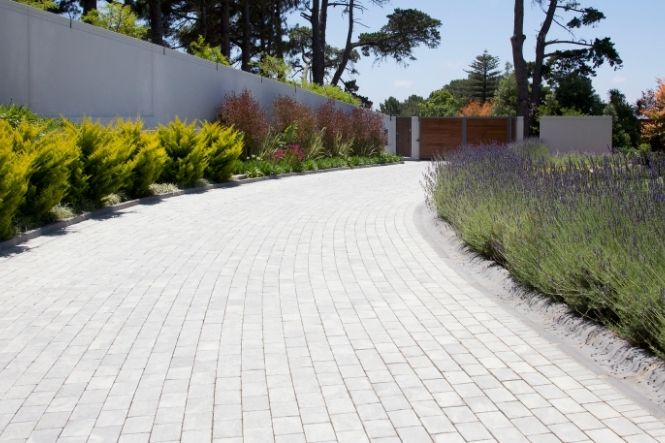Cobbles are large, rounded but irregular stones that have gained their shape from the action of the sea or a river rolling the stones around. Larger than gravel, other names for cobbles are duckstones or river stones.
Cobbles straddle the categories of loose and hard surfaces. They are sold loose like gravel but often have to be installed with a bonded bedding surface (usually concrete) to hold them in place. In a garden you might get away with loose cobblestones, as long as they are held in a confined area with kerbstones or Edging. They can also be used as a defensive surface under ground floor windows, as the noise and slipperiness make things difficult for intruders.
Cobbles as a Deterrent
Although cobbles are a traditional road laying surface, and were used for centuries throughout the towns and cities of the UK, for roads and paths alike, their use as a driveway material is now rare. This is because they are not finished, like Flagstones or blocks, so they present a loud and uncomfortable ride to modern vehicles. Having said that, this relative discomfort has led to cobbles being used in towns to deter people from driving in certain pedestrianised or semi-pedestrianised areas.
If you are laying a drive in a situation where neighbours or visitors tend to encroach and make it difficult to get in or out of your property, then cobbles might be an asset for you. People will be less likely to encroach as your drive will look very different to the surrounding roads and pavements, and the drumming sound and bumpy ride when they do hit it will give people the subconscious message that they should not be on that piece of land. The discomfort that you will have to bear will be minimal unless you have a very long driveway.
Foundations for Cobbles
Construction methods for cobbles developed in a number of ways in different parts of the country and at varying times, but these days the laying method would probably be close to that of Block Paving but with a wet bedding layer (i.e. concrete that will set and hold the stones in place) rather than a layer of loose sand. Beneath this there should be at least one layer, if not two, of base material.
For a pavement you would definitely only have one layer, while for a heavily trafficked road, it would definitely be two. Domestic driveways fall somewhere between the two. Whether or not you need one or two layers will depend on the type of ground you have and the gradient that the drive will need to cope with.
Laying Cobbles
When laying cobbles there are a number of different pattern options. Random laying is the easiest as it requires no sorting of the cobbles. The disadvantage is that there will need to be larger gaps of concrete in between the stones, so it won’t look as good and the ride will be somewhat more uncomfortable.
The best looking and hardest to lay pattern is ‘coursed’, where stones of similar sizes and shapes are laid out in rows. In between those two is ‘rough parallel’, where there is some attempt to get the cobbles in rows but in a less rigid manner than coursed laying.
Once cobbles are laid they can be levelled off with a wide, flat piece of timber laid over the most recently finished rows; a few taps with a mallet will then level the stones. For an increased deterrent effect, leave the stones protruding well above the bedding layer and further apart. But for the smoothest and quietest ride, use a dense laying pattern with the stones well bedded down with each one’s flat side uppermost.
A Drive that’s Likely to Outlive Your Grandchildren
The one thing you can be certain of is the longevity of the driveway. Judging by the condition of the cobbled streets that still exist throughout the country in places where they have been allowed to stay, you can be sure that the driveway will out-live you, your children, and quite a few more generations.

